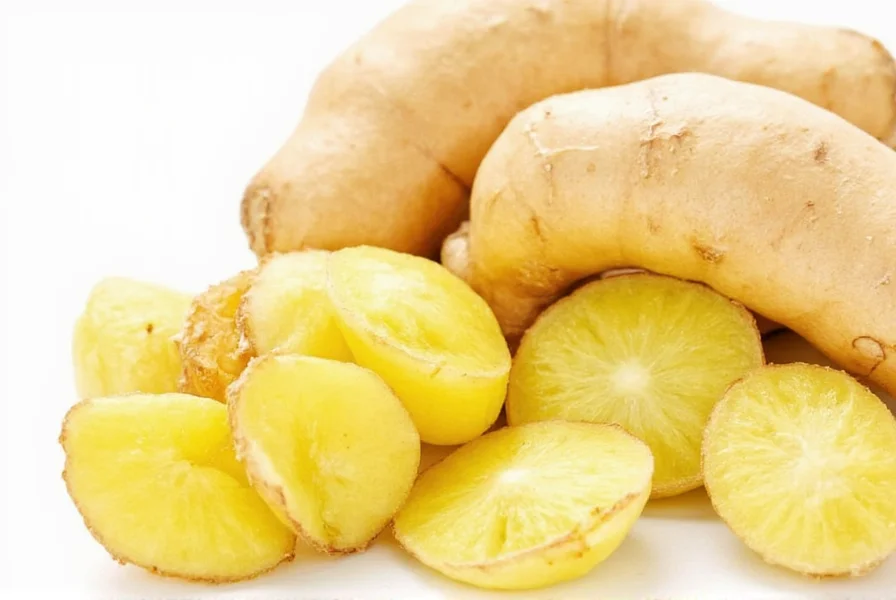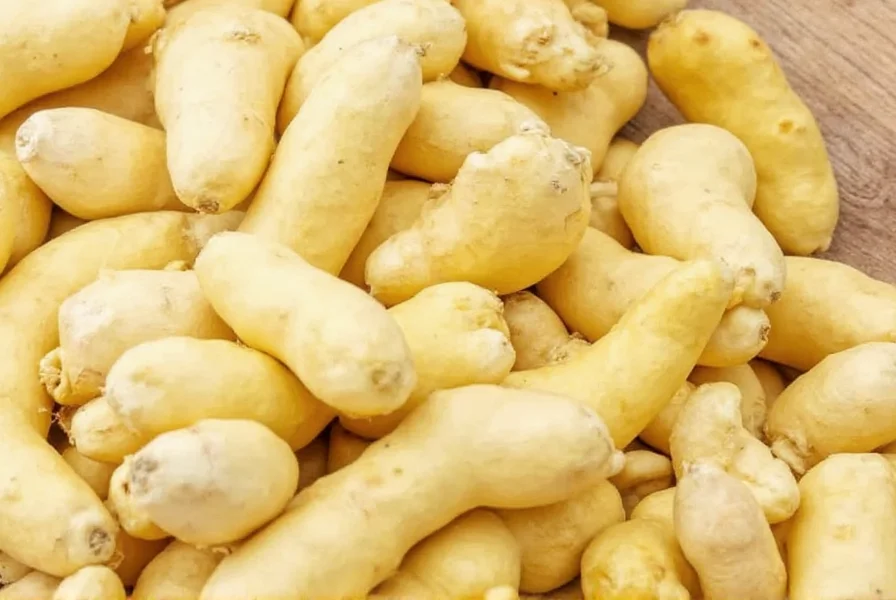Yes, you can safely eat ginger skin. The thin outer layer of ginger root is completely edible, packed with additional fiber and nutrients compared to peeled ginger. Whether you should consume it depends on the ginger's source (organic vs conventional), thoroughness of cleaning, and personal texture preferences. Organic ginger with intact skin generally offers the most nutritional benefits while minimizing potential pesticide exposure.
Many home cooks automatically peel ginger without considering whether it's necessary. This common kitchen habit might be causing you to miss out on valuable nutrients and flavor compounds concentrated in and just beneath the skin. Understanding when to keep ginger skin on versus when to peel can enhance both the nutritional value and culinary experience of your dishes.
Is Ginger Skin Safe to Eat?
Ginger skin itself is not toxic and poses no inherent health risks when properly cleaned. The primary safety considerations relate to potential contaminants rather than the skin itself:
- Conventionally grown ginger: May contain pesticide residues on the skin surface
- Organic ginger: Generally safer to consume with skin intact
- Cleanliness: Proper washing removes dirt, bacteria, and potential contaminants
- Source quality: Older or moldy ginger should be avoided regardless of peeling
Food safety experts agree that ginger skin from reputable sources, when thoroughly cleaned, presents no significant health risks for most people. The U.S. Food and Drug Administration considers ginger skin safe for consumption as part of the whole root.
Nutritional Benefits of Ginger Skin
Research shows that ginger's outer layers contain concentrated beneficial compounds. A 2022 study published in the Journal of Food Science and Nutrition found that ginger skin contains up to 20% more antioxidants than the inner flesh.
| Nutrient | Skin Content | Peeled Ginger Content | Difference |
|---|---|---|---|
| Antioxidants | High | Moderate | +20% |
| Dietary Fiber | Very High | Moderate | +35% |
| Gingerols | Moderate-High | Moderate | +15% |
| Vitamin C | Moderate | Low | +25% |
The skin's higher fiber content particularly benefits digestive health, while the additional antioxidants provide enhanced anti-inflammatory properties. When preparing ginger for medicinal uses or health-focused recipes, keeping the skin intact maximizes potential benefits.

Texture and Flavor Considerations
While nutritionally beneficial, ginger skin does affect culinary applications:
- Texture: Young ginger has thin, tender skin barely noticeable when cooked, while older ginger develops tougher, fibrous skin that may create an unpleasant mouthfeel in certain preparations
- Flavor intensity: The skin contains slightly higher concentrations of gingerols (the compound responsible for ginger's characteristic heat), potentially making unpeeled ginger more pungent
- Visual appeal: In transparent preparations like ginger tea or clear sauces, skin particles may affect presentation
Chef Marco Rodriguez, culinary instructor at the International Culinary Center, notes: "In most cooked applications, especially where ginger is finely grated or pureed, the skin makes no discernible difference to texture. I only recommend peeling when preparing raw ginger for salads or when creating visually pristine dishes where skin particles would be noticeable."
When to Peel Ginger vs. Keep the Skin On
Understanding when to peel ginger before using depends on several factors:
Situations Where Keeping Skin Is Recommended
- Organic ginger that has been thoroughly scrubbed
- Cooked applications like soups, stews, and curries
- When making ginger tea or infused beverages
- For juicing or smoothies where texture isn't a concern
- When maximum nutritional benefit is the priority
Situations Where Peeling Is Recommended
- Conventionally grown ginger with uncertain pesticide history
- Raw applications like salads or garnishes
- When creating smooth purees or sauces where texture matters
- Older ginger with thick, fibrous skin
- For decorative purposes requiring uniform appearance

Proper Cleaning Technique for Unpeeled Ginger
If you decide to keep the skin on, proper cleaning is essential for food safety. Follow these steps for safely consuming ginger with skin:
- Rinse ginger under cool running water to remove loose dirt
- Use a soft vegetable brush to gently scrub the surface
- For extra cleanliness, soak in a solution of 1 part white vinegar to 3 parts water for 5-10 minutes
- Rinse thoroughly again under running water
- Pat dry with a clean towel before use
This cleaning method effectively removes surface contaminants while preserving the valuable nutrients in the skin. Research from the University of California's Agriculture and Natural Resources department confirms that proper scrubbing removes up to 98% of surface pesticides from produce with edible skins.
Special Considerations for Different Populations
Certain groups should exercise additional caution regarding ginger skin consumption:
- Pregnant women: While ginger itself is generally safe during pregnancy, extra care with cleaning is recommended to avoid potential foodborne illnesses
- Immunocompromised individuals: May want to peel ginger to minimize any risk from surface bacteria
- Young children: Thorough cleaning is essential, and peeling may be preferable for texture reasons
- People on blood thinners: Ginger's natural blood-thinning properties aren't concentrated in the skin, but consistent consumption of any form should be discussed with a physician
Practical Applications in Cooking
Professional chefs have developed techniques to maximize the benefits of ginger skin:
- For grating: Freeze ginger briefly, then grate skin and all using a microplane for nearly undetectable texture
- For infusions: Slice ginger with skin on for teas or syrups, then strain out solids
- For stir-fries: Thinly slice young ginger with skin for minimal texture impact
- For baking: Puree unpeeled ginger for cakes and cookies where texture blends in
"I've found that keeping the skin on actually improves the flavor profile in many Asian dishes," shares Chef Mei Lin, James Beard Award-winning chef. "The slight textural difference disappears during cooking, but you get that extra dimension of flavor from the skin's compounds."
Conclusion: Making an Informed Choice
The question of whether can you eat ginger peel raw has a straightforward answer: yes, with proper cleaning. However, the decision to keep ginger skin on involves balancing nutritional benefits, texture preferences, and food safety considerations.
For most culinary applications with properly cleaned organic ginger, keeping the skin provides additional nutritional value without compromising quality. When using conventionally grown ginger or preparing dishes where texture is critical, peeling remains a reasonable choice.
By understanding the factors that influence ginger skin nutritional value and applying appropriate cleaning techniques, you can make informed decisions that maximize both health benefits and culinary enjoyment.











 浙公网安备
33010002000092号
浙公网安备
33010002000092号 浙B2-20120091-4
浙B2-20120091-4